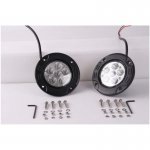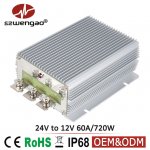I am in the process of writing up an enormous how-to article on 24V and 12V compatability issues. Just not quite done yet.
First, if all you wanna' do is add reverse lights and have no other 12V needs, the easiest thing to do is either use some 24V back up lights or LEDs that run from 10-30 volts. So you wouldn't have to worry about making the 12V power source at all.
If you think there are accessories that you might want to add later on that are 12V only (like civilian trailer brake controller capability), then you're going to have to have some source of 12V power.
You can add a third, stand alone 12V battery and charge it with a HMMWV dual voltage output alternator, or you can add a second, 12V alternator that feeds the 3rd battery.
Or you can buy a DC 24V-12V converter. This is easiest and it's what I'd do if I were doing my truck now. Only issue with the converter route is that you need to anticipate the 12V power demands you're going to put on it. If all you need is a cell phone charger, then the cheapest 10A unit will suffice. If you're going to pull a big civilian trailer with electric brakes (12V obvs) and lots of lights and all that, you need a converter that will put out 30-40A+.
On my truck, everything is 24V (reverse lights, midships lights, front floodlight, rear winch, etc.) except for the stuff that had to be 12V. Civilian trailer wiring and brake controller, cell hone chargers, etc.




























